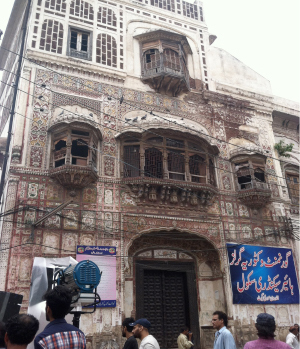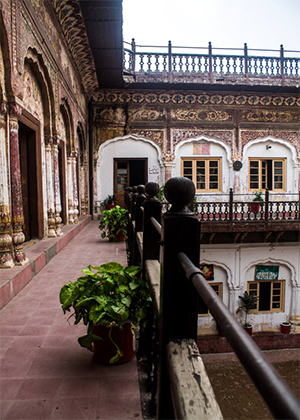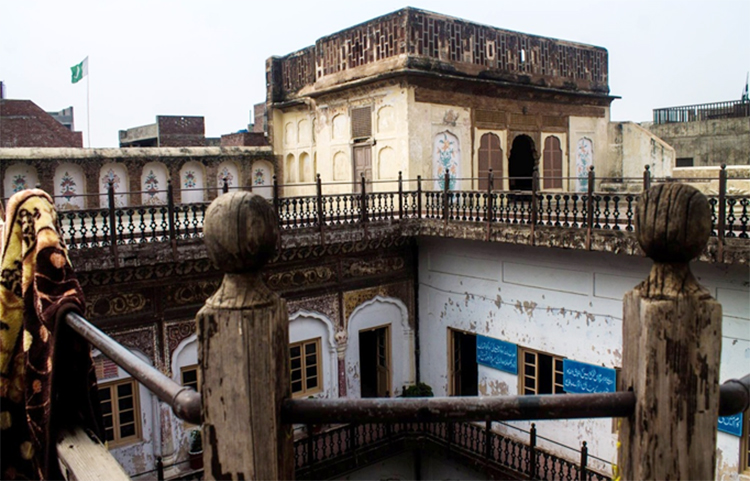Written by: Mahnaz Shujrah
Posted on: June 20, 2016 | 
Exterior of Nau Nihal Singh Haveli

Traversing the twisted routes of the Walled City, somewhere between the famous Bhatti and Lohari Gates, I did not have a destination in mind, so I continued to follow my friend who had been here before. We were apparently headed to an old haveli, and the only prior knowledge I had was that part of Shoaib Mansoor's film BOL had been shot here, including the famous song Hona Tha Pyaar by Atif Aslam. We continued to walk until we ended up at a clearing; this open area was known as Maidan Bahian, which used to be a garden back in the day, but we could see no remnants of it now.
Standing right in front of the haveli, I could tell that whoever first constructed this building had outstanding taste. The structure could not hide its age; rather, it showcased itself proudly, and just by looking at the architecture, one could tell how much this place would have stood out from its surroundings at the time of its construction.

Reading the curiosity on my face, my friend started explaining to me where we were. The haveli had been built by Nau Nihal Singh, who was the son of Kharak Singh and the grandson of Maharaja Ranjit Singh. It was his private residence, and to this day remains one of the most prominent sites of Sikh heritage in Lahore. After the assassination of his father in 1840, Nau Nihal became the Maharaja of Punjab, but was killed a few days later by the same perpetrators who had murdered Kharak Singh. His mother, Rani Chand Kaur, took to residing in the haveli after his death.
While listening to this elaborate account, I couldn't help but imagine how the site would have looked in its heyday, with all its grandeur and magnificence. Although the building has now been transformed into a school for girls, ‘Victoria High School’, my mind kept wandering to a time much earlier.
I strolled along the hallways of the second floor, overlooking the clearing in the middle of the haveli. There were numerous paintings along the walls, depicting nature and scenes from the glorious history of the Sikhs. The level of detail in the frescos and woodwork was strikingly beautiful.

As I began making my way up, the narrow stairs seemed to keep climbing endlessly. I opened the wooden door that led to what looked like a ceiling-less room, except the walls only came up as far as my elbows. The first thing my mind registered was the cool breeze – and the second, that I was standing in the very heart of Lahore, from where I could see minarets of masjids rising up from different neighborhoods, kids playing on rooftops, and mothers putting clothes out to dry. The view wasn't pretty in the manner of colors or aesthetics, but it was undeniably beautiful in the way that it made you feel. It was a sense like no other. I always tell my friends that this was the day I fell in love with Lahore, and of course, the Haveli that made it happen.
You may also like: